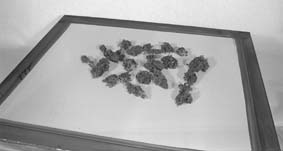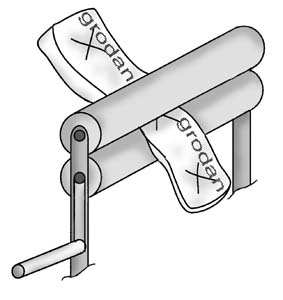|
We Update Daily!
 Custom Search Custom Search
Chris S. Kenoyer. Owner
MMJ Patient, Medical Activist,
Online Patients Advocate,
Online MMJ News Journalist
My Medical Bio
Follow Us Now On Twitter
@MedicalMMJMan
Or Follow Us Now
On Facebook
Email Us Here
olpwebs@yahoo.com
Or Email Us Securely Here
MedicalMMJMan@countermail.com
NEW 100% Encrypted Email Server
OLP’s Free MMJ News EList
Get The Latest In MMJ News
Press Contact Info
Is CBD? A Possible Cure For
Breast Cancer..? And All The Other
Many Forms & Types Of Cancer..?
Learn More About CBD Here
***************************
Advertise Here On OnlinePot
Rates As Low As $50 a Year
24/7 – 365 Days A Year Of Sales!
***********************************
Website Navigational Links
Main Start Page 2
**************************
Latest Marijuana News Reports
*********************************
Parody’s Cartoons US
Government Grown Pot,
Term Papers, School
Reports, & Thesis’s On
Marijuana & Cannabis
*********************************
Amsterdam A to Z
********************************
Canadian Marijuana Websites
*******************************
Church’s & Pot Cannabis
*****************************
Co-Ops, Clinics, Dispensary’s
*****************************
Marijuana Doctors & Clinics
****************************
Pot Cooking Recipes
****************************
Drug Testing A To Z
***************************
Pot Games
****************************
Pot Songs Video’s
****************************
100’s Of Grow Guides
***************************
Hash A- Z
***************************
Cannabis Legal Info, Drug
Lawyers, State, Federal Laws,
State & Supreme Court Rulings
**********************
POW’s Of The MMJ War!
*****************************
Other Marijuana Websites
Reciprocal Link Exchange
****************************
Medical Marijuana Studies,
Research Report’s, Medical
Cannabis Clinic Study’s
****************************
Parody’s & Cartoons
When We All Need A Good Laugh!
****************************
Avoiding Online MOM Scammers
Newly Re-Updated Info!
*****************************
The Politics Of Contraband
Medical Marijuana In The Mail?
******************************
The Hall Of Shame Section
The Online MOM Scammers
*****************************
Online MOM Providers Ads
****************************
Politicians & Voters Rights
****************************
Medical Marijuana, Strains
****************************
The OG Marijuana Strain Guide
****************************
800+ FAQ Growing Questions
****************************
Patients Spiritual Guidance,
Free Online Crisis Help Center
****************************
Online Marijuana Seed Banks
****************************
Maximum Security Section
Just Updated!
*****************************
Traveling Tips, Guides, B & B’s
****************************
Vaporizers A To Z
*****************************
Online Pot Video’s & Movies
**********************************************
Please Visit Both Of Our Sister Websites!
Maine Patients Coalition.org
The Reefer Madness Teaching Museum.org
Listen Right Here Online!
To Original 1930-1950’s
Reefer Madness Propaganda
Radio Shows And Programs
Before TV There Were
"Radio Stars"



*********************************
Legal Disclaimer
Guest Book
Translate Text or Web Page Go To:
Language Tools Google Translations
Article Submissions & News
Reports Are Always Gladly
Accepted Here.

No part of this site maybe used or
reproduced in whole or in part
without the written consent of the
Copyright Owner
www.onlinepot.org
OLP ENTERPRISES L3C
1999-2014 Copyright
© All rights reserved
OnlinePot assumes no legal liability for any products, or information or
news posted, services offered, Or
any contests or give away’s offered.
|
|
Rockwool The Book Chapter #7
Making Marijuana Clones and Cuttings
Return Back To OnlinePot’s Grow Guides
Main Grow Page#1 Or Main Grow Page#2
Rockwool the Book Chapter #1
Learn how to grow medical marijuana hydroponicly,
all 8 chapters ONLINE!
Rockwool #2 Physiology of Plants
Rockwool #3 Necessities and Climate Control
Rockwool chapter #4 Lights
Rockwool #5 Lights,CO2,Climate,Humidity
Rockwool #6 Water
Rockwool #7 Growing Cannabis
Rockwool #8 Diseases, Pests,& Plagues
PART III: Growing Cannabis
Chapter 7: Clones and Cuttings
7.1. Preface
In the previous chapter, we’ve told you what equipment you need to grow hemp. Furthermore you’ve been initiated into the secrets of good climate control to reach an optimal result. Up until now, we haven’t said a word about the living material you can use to ‘rise high'(!) . . . In this chapter, we’ll look at the actual cultivation. We’ll leave sprouting cannabis from seed for what it is. We’ll talk about starting with clones. It’s not completely clear why the word ‘clones’ has been adopted by the weed grower; we’re talking, in fact, about ‘cuttings’.
7.2. Cloning hemp
Cloning hemp is a cheap, quick way to get plants. The average gardener has taken cuttings from his/her house plants at one time or another. It’s not much different with hemp. We only have to make sure the carefully removed cuttings from the mother plant are brought to root. A healthy mother plant can pass on her THC-producing properties from generation to generation by means of cuttings. Each cutting has the same properties as the mother plant. A cutting can be taken from a cutting. And from that cutting, yet another. There are growers who have raised 20 generations from a mother plant this way, without diminishing the growing power of the plants. The yield from the 20th generation is just as good as the yield from the first one! By then, the original mother plant is long past use. Taking cuttings causes trauma to a plant. The plant reacts by taking on a deviant form, and by starting male branches. A third problem is regressive mutation. The mother plant has been developed by cross breeding. With regressive mutation, the carefully bred properties (to a degree) are lost. The quality of the plant (and, of course, the quality of the harvest!) decreases. For this reason, we replace the original plant with one of her fresh, healthy daughters after 12 weeks at maximum. The ease with which hemp can be cloned makes planting cannabis seed less attractive. In the first place, sowing seed takes a lot more time than growing from clones. An advantage not to be underestimated is the fact that you can harvest much more often if you raise clones rather than grow from seed. On top of that, you get males as well as female plants from seed. The chance that a seed produces a male plant is just as great as the chance a female will appear: 50% . . . To make hemp cuttings/clones we need: – a high-quality mother plant; – sharp scissors, or a sharp knife; – any commercial hormone mixture to promote root growth; – something to start the cuttings in (a cutting tray with rockwool plugs, a small grow-tank with washed, rough sand, fine vermiculite, a soil-free mixture, or potting soil); – phosphoric acid – a ‘cool white 33’ fluorescent tubelight with the proper armature; – ventilation; – clean working methods, and clean sur roundings; – ‘green fingers’ In contrast to raising cannabis plants, for which we use 400 Watt or 600 Watt high-pressure gas lamps, clones develop their roots best under fluorescent light. Fluorescent tubes emit light primarily in the blue spectrum. Controlling the temperature when using fluorescent lights is also less complicated, because fluorescent tubes give off little heat. The fluorescent tube armature is mounted approximately 25 cm above the tops of the clones.
We’re going to illuminate the cuttings 18 or 24 hours per day. We keep the light on 24 hours a day during the cold months. The illumination times suggested here are a guide. What it actually involves is allowing the climatological conditions to vary as little as possible. You get the best results with an even climate. It requires some experience to create the optimum conditions . . . The hemp cuttings form their roots best at a temperature of 25 to 26 degrees Celsius, and a relative air humidity of 70-75%. Just as is the case with actual growing, climate control is very important for cuttings. Moulds and pests insects must never get a chance. Above all, mould spores can cause problems if the climatic conditions aren’t optimal. In principle, every part of a hemp plant is suitable to use as a cutting. But a single leaf with a few roots is of no use of course In any case, a good cutting has a growth-point.
The size of the cutting doesn’t matter so much; a 2 cm cutting can grow to be a top-quality plant, just like a 10 cm cutting. Before you put the cutting in the growth medium, you have to make preparations. We’re talking about raising cuttings in rockwool substrate. First, the growing tray should be soaked in a nutrient solution. The pH value must be 5.8, the EC value 0.8 to 1.0. To reach a pH value of 5.8, you best use phosphoric acid. The advantage of phosphoric acid is that it helps the cuttings develop roots. We fill the tray for the cuttings with the nutrient solution and drain it off again. We do this several hours before taking cuttings from the mother plant. The cuttings are clipped, or cut with a sharp knife or scissors. Take care not to leave the ends frayed. A clean cutting loses less sap than a cutting with a frayed end. Moreover, there’s the risk that ravelled parts of the plant will rot. Directly after clipping or cutting, we dip the clone first in water, and then in rooting hormones. Then we stick the cutting into the rockwool plug. The growing tray for the cuttings must then be saturated for 3 or 4 days with nutrient solution. Good hygiene is very important when getting cannabis cuttings to root. Work as clean as possible. Always clean your scissors, knife and growing trays with a medical disinfectant (i.e. Dettol) after you’ve used them. Check the clones daily for possible rotting parts. Rotting leaves or stems must always be removed, so that moulds won’t get a chance. It’s also important not to put the clone tray in a bed of water.
That makes rooting more troublesome, and the roots will be of less quality. Also, a too wet clone tray causes root rots such as pythium afungus on the roots. Just like all plants, hemp cuttings also need fresh air containing CO2. We have to ventilate the clone room, too. Sometimes, ventilation is necessary to keep the temperature stable. When using a ventilator, you must try to create an optimal climate without exposing the plants to gale force 9. The cuttings can dry out as a consequence of too much air movement. When you have all the climatic conditions under control, you can start waiting for roots to develop. It takes about 10 days before you see the first results with healthy plants. After a fortnight, healthy cuttings will have enough roots to be transplanted. In principal, approximately 80% of the cuttings will root, if you control the climate well. Allow the cuttings which have no roots after a fortnight one more week. These cuttings can produce a plant of lesser quality. If no roots have grown after 3 weeks, you can throw those cuttings away. Don’t count on all the cuttings taking root; plant about 20% more than you ultimately intend to keep. Planting rooted clones is a tedious job. The root systems of the young plants are very tender, and can easily be damaged. The extremely small root hairs are very important for a healthy plant. Many splendid cuttings have been ruined by rough transplanting The roots of plants don’t like light (they grow in the dark), and air (they dry out quickly). The young plants will now go to the spot where they will spend the rest of their lives. For plants, transplanting more than once is just as traumatic as making people move house twice a month . . . Now, the plants must become accustomed to their new surroundings. They must get sufficient water, but not yet the full amount of light. After a few days, the real irrigation schedule can begin, and the plants go under the full light of the high-pressure gas lamps. The vegetative, or growth phase begins . . .
7.3. The vegetative phase
In this phase, the plants are illuminated 18 hours per day, and kept in darkness 6 hours per day. If all aspects are in order, (sufficient light, proper ventilation, good temperature, enough water and nutrients, in short: complete climate control), the plants will grow quickly; up to 5 cm per day. The duration of the vegetative stage is strongly dependent on the control of climate. The better the climatic conditions, the earlier the cutting takes root. The vegetative phase lasts from 3 to 10 days at maximum. We’ll discuss growing 15 plants per square meter. If we want to use the surface area to the maximum, then we must prune the plants; – break off the uppermost part. pruning is possible only with plants that have rooted and begun to grow. If this is not the case, breaking or clipping the tops off should be postponed for a couple of days. By pruning the plants, we ensure that they not only grow tall, but wide, as well. After cutting off the tops, we leave the plant in the vegetative stage (18-hour cycle) for a few more days. When the off-shoots have grown 3-4 cm, we start the generative phase. If all goes well, three or four large tops will then form on each plant.
Then we’re ready to get around 50 tops per square meter. To get a wider plant, you can now break off the top-most part of the plant. Further pruning is not necessary. Pruning makes the plant grow fuller. That’s not to say you get a bigger plant, because you’ve also taken something away . Since the vegetative phase lasts only a short time, the plant must quickly make up for the damage. After pruning the top, two new branches will appear from the budding sight just under the spot where the top was. Be very careful with pruning; it’s a more painful experience for a plant than trimming your own nails After pruning, it’s not unlikely for growth to be delayed for a few days. It needs no further explanation that a clean, razor-sharp knife or garden scissors should be used. Actually, we can only think of one good reason for pruning. When branches don’t grow well, or are sickly or too thin, in short; unhealthy, you can, of course, carefully remove them. With pruning, it always involves the removal of the whole branch. Take care to touch the leaves as little as possible. That can easily disturb the workings of the stomata in the leaves. Some people swear by removing leaves in order to allow more light to reach other leaves. This is necessary; moreover, part of the growth capacity is lost. It’s also unnecessary to remove dying leaves. You only have to clear these away after they’ve fallen off the plant. Picking them off earlier might again cause damage to the plant . . .
7.4. The generative phase
After one weekat maximum, we will shorten the illumination time, and adapt the irrigation schedule accordingly. We keep giving water 6 times per light cycle. Give water and fertilizer during the period that the light is on, and not during the dark period. In the flowering, or generative phase, the plants are in the light for 12 hours, and in darkness for 12 hours. We imitate a shortening of the day in autumn; a sign for the plant to start flowering and forming seeds during its last phase of life. In the generative phase, the plant’s emphasis is less on growth. Less chlorophyll is produced and in the flowering phase, we often see fewer fingers forming on the cannabis leaf. The plant needs less blue light during the flowering phase (that was important for chlorophyll production in the leaves), and it needs more red light. The autumn sun produces more red light, because the autumn sun is lower in the sky.That doesn’t mean that you must now use only the sodium lamps.
With only red light, the plants lose their vegetative leaves (they turn yellow and fall off easily), while the stem of the plant is lengthened. The distance between the branches (also called the ‘internode’) increases. When we just let the mercury-iodide lamps supply the plants with blue light, this effect won’t occur so easily. The supply of water and nutrients continues. The time between irrigations is shortened, so that the plants are still irrigated during each light cycle. Not in order to push the plants to grow as fast as possible, but to keep the metabolism at level, and to produce resins. The female plants will show their first flowers after a week or two. The following period lasts at least 60 days, depending on the variety. With some of the plants, the blooming period lasts up to 90 days. It’s worth the trouble to be patient for the full flowering period before you start harvesting. Harvesting during that time stresses the plants, which can ultimately cause a decreased yield.
7.5. Harvesting and drying
In this book, we assume you’ve raised female cannabis plants from clones. When you’ve sprouted male as well as female plants, there will be some work sorting them out. The males flower earlier than the females. If you leave the males with the females, the females will be fertilized. The females then form seed, causing the tops to be smaller. The yield is lower (why did we start growing in the first place?). If you’ve sprouted males, you have to be sure to harvest them before the pollen reaches the female plants. When you grow only females, you don’t have this trouble. There are various methods to harvest cannabis. Some people cut the whole plant down, then hang it up to dry. Others break the largest leaves off several days before harvest, so there will be less waste. Hanging the plants, or the tops, upside down has no effect on the THC content in the tops. The resin doesn’t flow. What’s important with cannabis is the even drying of the THC-containig parts of the plant. What’s also important is patience.
Generally, drying goes quicker if you remove the stems which contain the most moisture. Using a microwave, or an ordinary oven, a hair dryer, or a fan does make drying faster, but usually also causes a (much) sharper taste. Even drying in air prevents as much as possible the loss of THC, and produces evenly dried buds with a soft taste. Controlling the climate also remains important after the harvest. Many harvests have been lost due to spider mites and mould. For the THC glands so important to us, light, heat, and friction are the most important things to avoid. Once dried, marijuana can best be kept air-tight in a reasonably cool, dark place. Air-tight glass jars are ideal.
7.6. Skuff
We’ll talk about ‘skuff’. This is the sifting of dried tops. When you sift your dried harvest first through a rough, then through a fine sieve, you remove all the remaining plant remnants, and get balls of resin (thus; THC) left on the sieve. It’s a fairly simple, but time-consuming job. Sift the dried harvest first through a size T-44 sieve. The THC falls through (with a little extra material). We have a T-77 size sieve under the T-44. You must carefully rub your harvest through the T-77 sieve. Then you have THC in it’s pure form without chemical processing

skuffsieve
7.7. Setting up the garden again
After the harvest, you must make sure you can literally start the following growth with a clean slate. First remove all the leftover plant parts. These go in the trash or in the organic waste, unless you have a compost heap. Then remove all the rockwool material. The rockwool still contains a lot of water.

old rockwool slab in the wringer
Tip: see if you can use an old wringer, or a centrifuge. That will decrease the volume of the disposed rockwool by half. The following step is to disinfect the equipment. Any commercial disinfectant will do. Read the label to see how much to dilute it. Clean your irrigation system with disinfectant, and always thoroughly rinse afterwards. Possible calcium build-up on your humidifier should be removed. Cleaning lamps and reflective material is the next step. The lamp should be off, and completely cooled. Don’t touch the lamp with your hands, because bodily acids can easily burn them. Result: shorter lamp life. Everything is now ready for the next growth. Lay out new rockwool material and wet it. It’s time for new planting, so the timer clock goes back to 18 hours, and the irrigation to once every three hours.
|
Rockwool the Book Chapter #1
Learn how to grow medical marijuana hydroponicly,
all 8 chapters ONLINE!
Rockwool #2 Physiology of Plants
Rockwool #3 Necessities and Climate Control
Rockwool chapter #4 Lights
Rockwool #5 Lights,CO2,Climate,Humidity
Rockwool #6 Water
Rockwool #7 Growing Cannabis
Rockwool #8 Diseases, Pests,& Plagues
|



 Button Ads!
Button Ads! 






